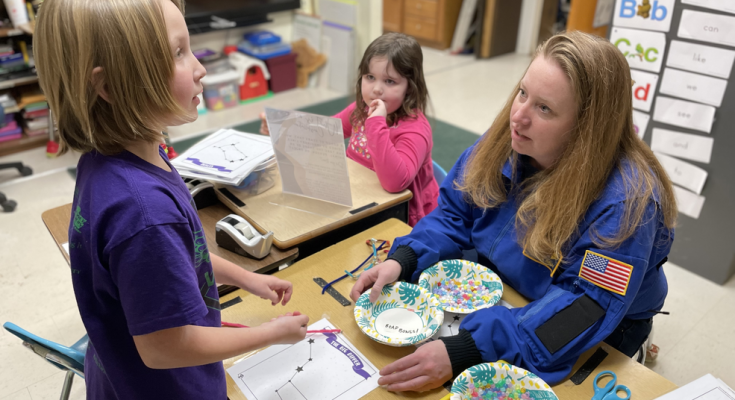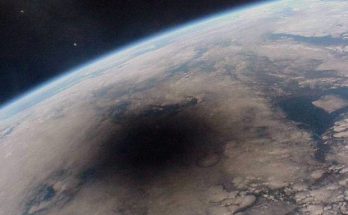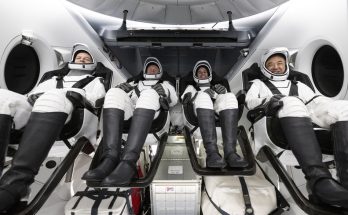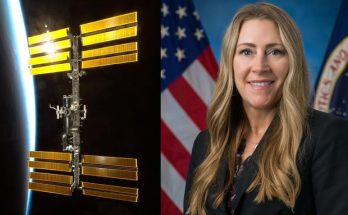Washington/NASA needs a diverse workforce to accomplish the nation’s ambitious goals of returning humans to the Moon through the Artemis missions, exploring deep space, and continuing to work at the forefront of science and technology. Though NASA’s Office of STEM Engagement (OSTEM), the agency proactively engages groups who have historically had fewer opportunities to participate in STEM activities and are underrepresented in the current STEM workforce. One of these groups comprises women and girls; women make up nearly half of the nation’s total workforce but represent only 27% of the workforce in STEM fields.
“It’s so important for girls to have opportunities to engage with NASA’s missions and to see astronauts, engineers, scientists, and other specialists who look like them,” said Kris Brown, deputy associate administrator of NASA’s Office of STEM Engagement. “We want girls to know about the possibilities that await them and to consider a career helping NASA explore.”
As NASA celebrates Women’s History Month, here are a few of the ways NASA’s Office of STEM Engagement is helping girls and women find their place in space:
Reaching K-12 Girls Where They Are
NASA’s Next Gen STEM project, which focuses on sparking a STEM interest in K-12 students, created the Teams Engaging Affiliated Museums and Informal Institutions (TEAM II) funding opportunities, including Community Anchors, to support facilities such as museums, science centers, libraries, and planetariums. These “informal education institutions” are uniquely positioned to provide STEM experiences to students within their communities.
One example is the SciGirls video series, produced by Twin Cities Public Television in Saint Paul, Minnesota. Through funding from TEAM II, the public access series designed NASA-themed content to engage girls aged 8-13 in science topics, including exploring the Moon, Mars, and NASA careers. The episodes are designed to increase girls’ self-confidence and knowledge about space exploration, connecting topics to their own experiences.
In Maine, NASA Community Anchor awardee Challenger Learning Center of Maine brings virtual Mars programming to 13 rural schools across the state. Earlier this year, the center hosted a virtual Girls in STEM night with a special guest: Aerospace Engineer Richa Sirohi of NASA’s Jet Propulsion Laboratory. Another virtual program for girls is planned for March 30, focusing on human exploration of the Moon and featuring NASA Navigation and Mission Design Engineer Lauren Konitzer of NASA’s Goddard Space Flight Center.
Showing Girls the Future is Female
First Woman, developed by NASA’s Space Technology Mission Directorate (STMD), tells the fictional tale of Callie Rodriguez, the first woman to explore the Moon while showcasing the ways technology will enable humans to live and work on the Moon and, eventually, Mars. Through a series of graphic novels and digital platforms, First Woman aims to capture our attention and unite the next generation of explorers who will return to the Moon. Check out the First Woman Graphic Novel and Camp Experience for hands-on activities to accompany the novel.
Partnerships Provide Powerful STEM Connections for Girls
NASA collaborates with industry partners to create innovative new ways to broaden student participation in STEM and reach new students with the excitement of the agency’s missions.
When NASA’s Artemis I mission sent the uncrewed Orion spacecraft on a flight test to the Moon late last year, Girl Scout Space Science badges went along for the ride. The recipients of the flown badges are the 81 winners of an Artemis-themed essay contest, “Girl Scouts To the Moon and Back,” hosted by Girl Scouts of the USA, in partnership with NASA. The contest asked girls to imagine themselves in roles in STEM fields and being a part of future space exploration.
Last month, in celebration of Introduce a Girl to Engineering Day on Feb. 23, NASA and Discover Engineering collaborated on a live, virtual interaction with Cathy Koerner, NASA deputy associate administrator for Exploration Systems Development, for girls to learn more about engineering, starting STEM careers, and NASA missions. The event engaged classrooms nationwide and included a hands-on engineering activity.
Supporting STEM Pursuits at Women’s Colleges and Universities
To help engage and retain more women in STEM, NASA’s Minority University Research & Education Project (MUREP) created the Women’s Colleges and Universities funding opportunity. This new initiative is designed to equip female students with the knowledge, support, and skills needed for success in undergraduate and graduate STEM degree programs and, eventually, STEM careers. Applications for this opportunity are due by April 17, 2023; visit the solicitation web page for more information.
NASA’s Office of STEM Engagement is committed to broadening student participation in STEM fields through resources and opportunities for students and educators at all academic levels.
#NASA; #Women; #Girls; #STEM





